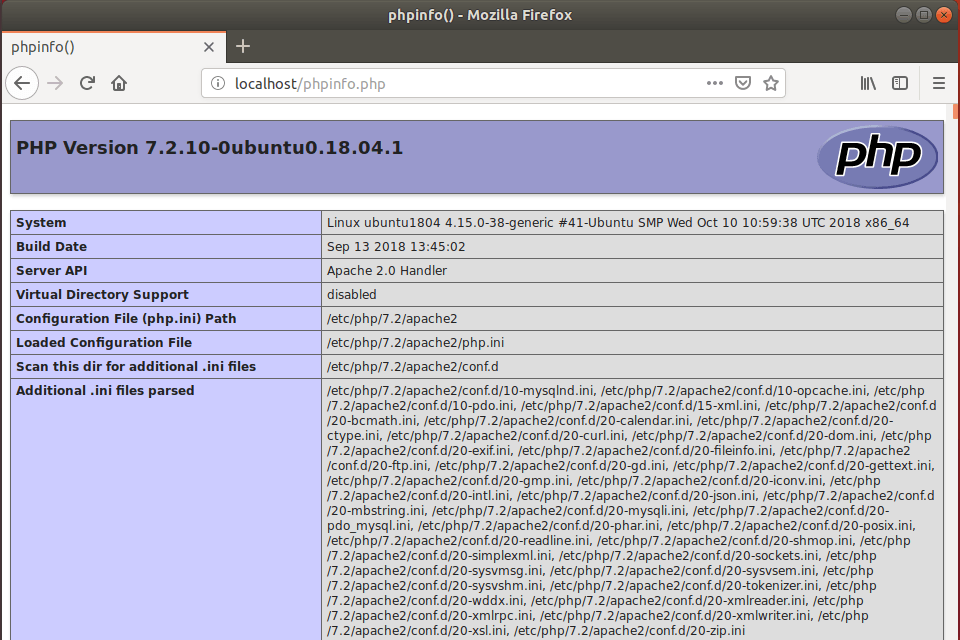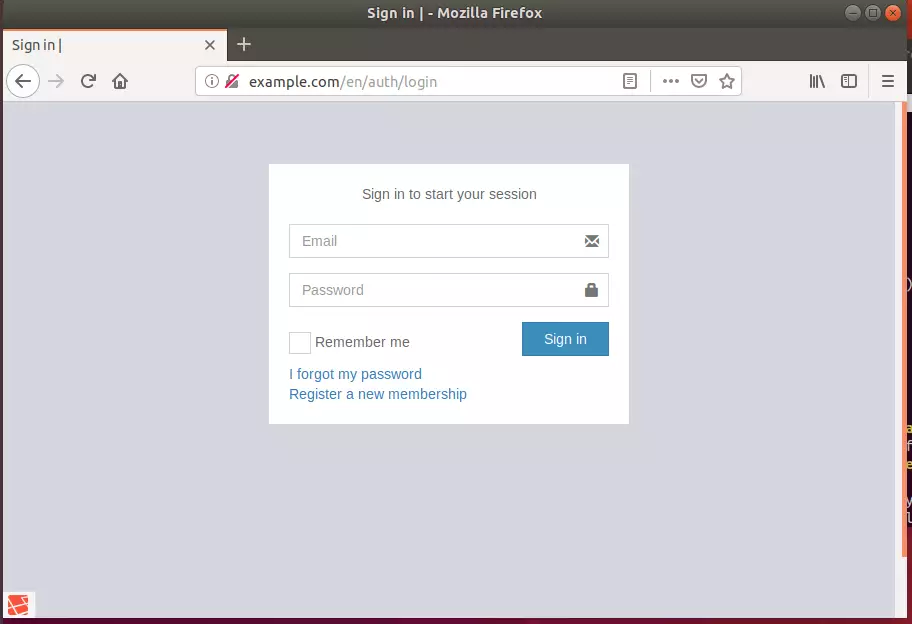This article explains installing Asgard CMS with Apache support on Ubuntu Linux.
Asgard CMS is a free and open-source Laravel content management system that’s modular and multilingual. With Asgard, you get a clean and straightforward administrative area without clutter.
There are many reasons why one might choose to install Asgard CMS with Apache on Ubuntu Linux.
Here are a few:
1. Asgard CMS is a free and open-source Laravel content management system that’s modular and multilingual. With Asgard, you get a clean and straightforward administrative area without clutter.
2. Asgard CMS is designed for ease of use to allow enterprises and business owners to collaborate and automate engaging experiences with users across multiple devices, including mobile.
3. Apache2 HTTP Server is the most popular open-source web server available today, and it is required for Asgard CMS to function.
4. MariaDB is a great place to start if you want a genuinely open-source database server, and it is also required for Asgard CMS to store its content.
5. PHP 7.2 is required for Asgard CMS, and these instructions provide a way to install it on Ubuntu if it is not available in the default repositories.
6. By installing Asgard CMS on Ubuntu Linux with Apache, you can create a powerful and customizable content management system that is both free and open-source.
For more about Asgard CMS, please check their Homepage
Install Apache2 HTTP Server
Asgard CMS requires a web server, and the Apache2 HTTP server is the most popular open-source web server available today. To install the Apache2 server, run the commands below:
sudo apt update sudo apt install apache2
After installing Apache2, the commands below can stop, start, and enable the Apache2 service to always start up with the server boots.
sudo systemctl stop apache2.service sudo systemctl start apache2.service sudo systemctl enable apache2.service
Now that Apache2 has been installed browse your browser to the URL below to test whether the web server works.
http://localhost

If you see the page above, then Apache2 is successfully installed.
Install MariaDB Database Server
Asgard CMS also requires a database server to store its content. MariaDB is a great place to start if you want a genuinely open-source database server. To install MariaDB, run the commands below:
sudo apt-get install mariadb-server mariadb-client
After installing MariaDB, the commands below can stop, start, and enable the service to start when the server boots.
Run these on Ubuntu 16.04 LTS
sudo systemctl stop mysql.service sudo systemctl start mysql.service sudo systemctl enable mysql.service
Run these on Ubuntu 18.10 and 18.04 LTS
sudo systemctl stop mariadb.service sudo systemctl start mariadb.service sudo systemctl enable mariadb.service
Next, run the commands below to secure the database server with a root password if you were not prompted to do so during the installation.
sudo mysql_secure_installation
When prompted, answer the questions below by following the guide.
- Enter current password for root (enter for none): Just press the Enter
- Set root password? [Y/n]: Y
- New password: Enter password
- Re-enter new password: Repeat password
- Remove anonymous users? [Y/n]: Y
- Disallow root login remotely? [Y/n]: Y
- Remove test database and access to it? [Y/n]: Y
- Reload privilege tables now? [Y/n]: Y
Once MariaDB is installed, run the commands below to test whether the database server was installed.
sudo mysql -u root -p
Type the root password when prompted.

The server was successfully installed if you see a similar screen.
Install PHP 7.2 and Related Modules
Asgard CMS is a PHP-based CMS, and PHP is required. However, PHP 7.2 may not be available in Ubuntu’s default repositories. To run PHP 7.2 on Ubuntu 16.04 and previous, you may need to run the commands below:
sudo apt-get install software-properties-common sudo add-apt-repository ppa:ondrej/php
Then update and upgrade to PHP 7.2
sudo apt update
Next, run the commands below to install PHP 7.2 and related modules.
sudo apt install php7.2 libapache2-mod-php7.2 php7.2-common php7.2-mysql php7.2-sqlite3 php7.2-gmp php7.2-curl php7.2-intl php7.2-mbstring php7.2-xmlrpc php7.2-gd php7.2-xml php7.2-cli php7.2-zip
After installing PHP 7.2, run the commands below to open the PHP default configuration file for Apache2.
sudo nano /etc/php/7.2/apache2/php.ini
The lines below are a good setting for most PHP-based CMS. Update the configuration file with these and save.
file_uploads = On allow_url_fopen = On short_open_tag = On memory_limit = 256M upload_max_filesize = 100M max_execution_time = 360 date.timezone = America/Chicago
Every time you change the PHP configuration file, you should restart the Apache2 web server. To do so, run the commands below:
sudo systemctl restart apache2.service
Once PHP is installed, create a test file called phpinfo.php in the Apache2 default root directory to test whether it’s functioning. ( /var/www/html/)
sudo nano /var/www/html/phpinfo.php
Then, type the content below and save the file.
<?php phpinfo( ); ?>
Next, open your browser and browse to the server’s hostname or IP address, followed by phpinfo.php
http://localhost/phpinfo.php
You should see the PHP default test page.

Create Asgard CMS Database
Once you’ve installed all the packages required for Asgard CMS to function, continue below to start configuring the servers. First, run the commands below to create a blank Asgard CMS database.
To log on to the MariaDB database server, run the commands below.
sudo mysql -u root -p
Then, create a database called asgardcms
CREATE DATABASE asgardcms;
Create a database user called asgardcmsuser with a new password
CREATE USER 'asgardcmsuser'@'localhost' IDENTIFIED BY 'new_password_here';
Then, grant the user full access to the database.
GRANT ALL ON asgardcms.* TO 'asgardcmsuser'@'localhost' IDENTIFIED BY 'user_password_here' WITH GRANT OPTION;
Finally, save your changes and exit.
FLUSH PRIVILEGES; EXIT;
Download Asgard CMS Latest Release
To get Asgard CMS’s latest release, you may want to download it via Composer. Install Composer, Curl, and other dependencies to get started.
sudo apt install curl git curl -sS https://getcomposer.org/installer | sudo php -- --install-dir=/usr/local/bin --filename=composer
After installing curl and Composer above, change into the Apache2 root directory and download Asgard CMS packages from Github.
cd /var/www/html/ sudo composer create-project asgardcms/platform asgardcms
Next, run the commands below to create the environment config file.
sudo cp /var/www/html/asgardcms/.env.example /var/www/html/asgardcms/.env
Then, open the file, edit the highlighted lines
sudo nano /var/www/html/asgardcms/.env
, and change the highlighted lines.
APP_ENV=local APP_DEBUG=true APP_CACHE=false INSTALLED=true APP_KEY= APP_URL=http://example.com DB_CONNECTION=mysql DB_HOST=127.0.0.1 DB_PORT=3306 DB_DATABASE=asgardcms DB_USERNAME=asgardcmsuser DB_PASSWORD=new_password_here CACHE_DRIVER=array TRANSLATIONS_CACHE_DRIVER=file SESSION_DRIVER=file QUEUE_DRIVER=sync
Save the file and exit.
Next, run the commands below.
cd /var/www/html/asgardcms sudo php artisan key:generate sudo php artisan migrate
Then, run the commands below to set the correct permissions for the Asgard CMS root directory and give Apache2 control.
sudo chown -R www-data:www-data /var/www/html/asgardcms/ sudo chmod -R 755 /var/www/html/asgardcms/
Configure Apache2
Finally, configure the Apahce2 site configuration file for Asgard CMS. This file will control how users access Asgard CMS content. Run the commands below to create a new configuration file called asgardcms.conf.
sudo nano /etc/apache2/sites-available/asgardcms.conf
Then copy and paste the content below into the file and save it. Replace the highlighted line with your domain name and directory root location.
<VirtualHost *:80>
ServerAdmin admin@example.com
DocumentRoot /var/www/html/asgardcms/public
ServerName example.com
ServerAlias www.example.com
<Directory /var/www/html/asgardcms/public/>
Options FollowSymlinks
AllowOverride All
Require all granted
</Directory>
ErrorLog ${APACHE_LOG_DIR}/error.log
CustomLog ${APACHE_LOG_DIR}/access.log combined
</VirtualHost>
Save the file and exit.
Enable the Asgard CMS and Rewrite Module
After configuring the VirtualHost above, please enable it by running the commands below.
sudo a2ensite asgardcms.conf sudo a2enmod rewrite sudo systemctl restart apache2.service
Then open your browser and browse the server domain name, which should bring up Asgard’s home page.
http://example.com/

Login to the backend by going to
http://example.com/backend
That’s it!
Congratulation! You have successfully installed Asgard CMS on Ubuntu 16.04 | 18.04 and 18.10.
You may also like the post below:

Leave a Reply Cancel reply